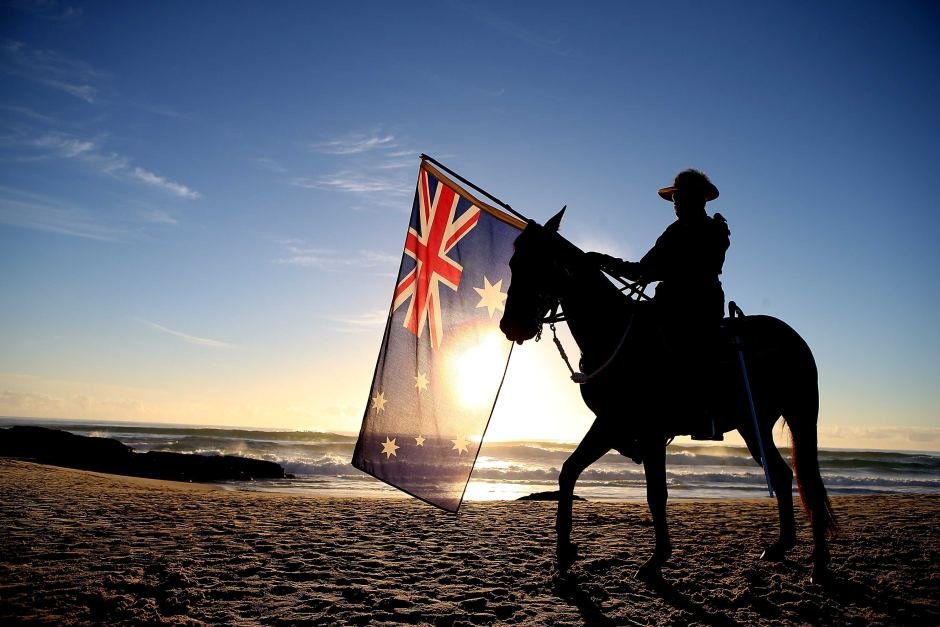
This is a small tribute to the Australian Light Horse, the men and their mounts. It is a reasonably long post and has nothing to do with cryptocurrency, memes, colourchange photography competitions or travel photography. I just wanted to share a little about these extraordinary men and mounts. They are gone now, dead one and all, but they live in my memory. I hope you persist to the end of my post. Please do. It's sad at the end but I want you to know...
In 1899 when war broke out between the Boers (Dutch farmers in South Africa) and the British Australia, as a colony of Britain sent troops. Not just any troops though. They were called The Light Horse. They proved to be such an effective force against the Boers, essentially mounted commandos, due to their ability to ride and shoot extremely well...
In 1901 Australia became a Commonwealth and our forces, the platform for what is now our military was laid.
Fast forward to 1914, the First World War, and the need for fighting men to stand tall. The Light horse answered the call again. By then there were 23 Light Horse regiments made up of militia volunteers. The men of these units flocked to join the AIF (Australian Imperial Force). Initially 4 regiments totalling 2000 men were promised to the British but by the end of the war 16 regiments were in action. That's a lot of men and horses.
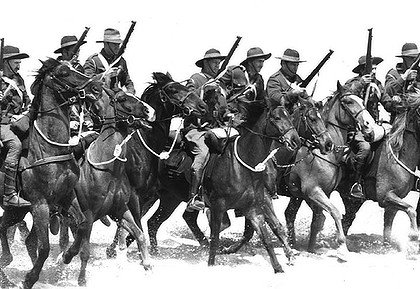
The horses these men rode were known as walers as that's where the breed originated from; Good sturdy horses with great hearts, speed, stamina and immense strength. Some troopers brought their own horses and if deemed suitable the AIF would pay about $60 or so for the animal. Remounts were purchased from graziers and breeders. The story of the sourcing of these animals is legendary.
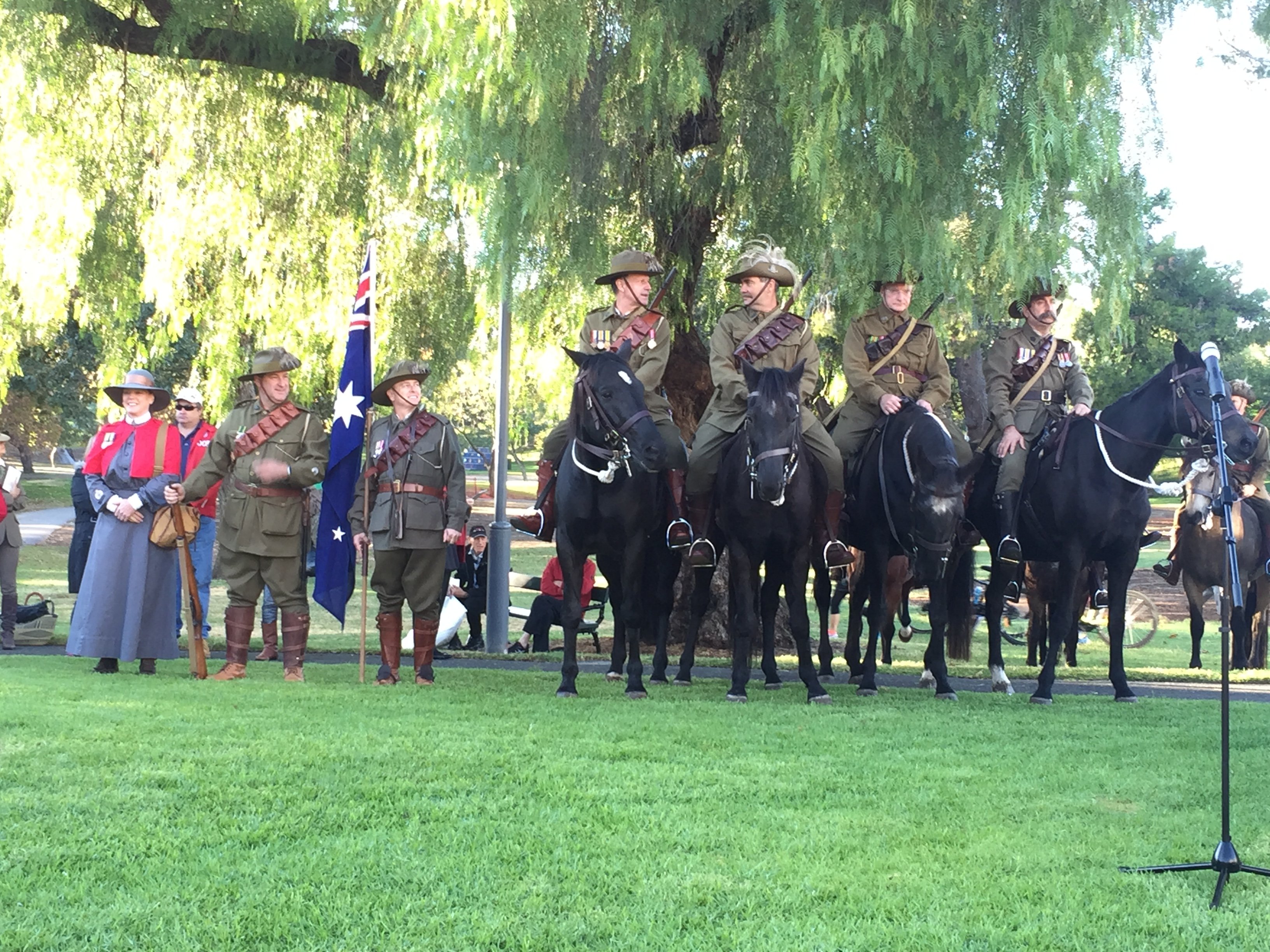
The Light Horse Trooper was required to carry everything he needed on his person or horse and an impressive array of items was packed, strapped and bundled on board with great care. The walers carried some 130-150 kilograms when fully loaded and sometimes for up to 60 hours in desert conditions with no water. They were impressive animals and their rider, the trooper, would care for his animal with extreme diligence. They loved their horses and would often water the horse and go without water themselves. The bond of horse and rider was unique and strong.
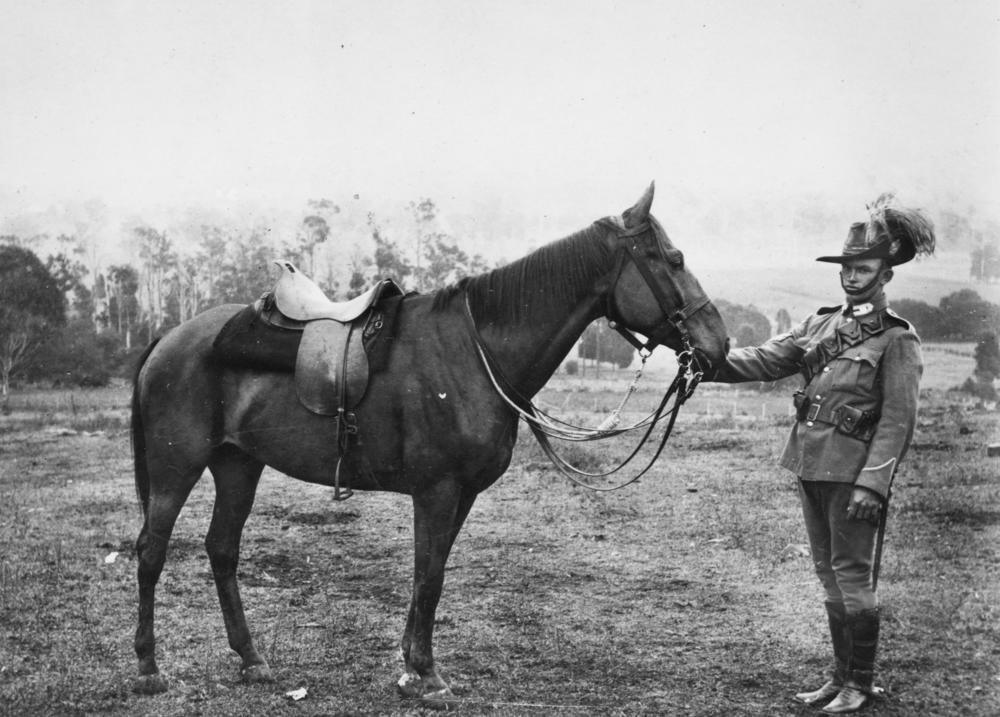
Sergeant Herrmann (Harry) Topp
Just a note on the feather, the plume, the Light Horsemen wore. It's an emu feather of course, but the blokes, being typical Aussies, thought it was funny to tell people they were kangaroo feathers. Kangaroo's of course, don't have feathers. They're not birds you see. :) I believe the tradition originated from these men wanting to display their skill at horsemanship. They would chase down an emu and pluck their plume from its back. Not an easy task I'm sure.
The Light Horse ( 4 regiments) were deployed to England and the transportation began. Troopers would spend 10-12 hours a day tending to their horse on the ships which greatly reduced the death rate. However as in war things changed. They were rerouted to Egypt and were eventually sent to Turkey and the infamous and ill-fated Gallipoli campaign. Of course, their horses would be no use on the steep cliffs and terrain in Turkey so they remained behind in Egypt. This was heartbreaking to the Troopers but they were eager to get at the enemy so they said their goodbyes and deployed to Gallipoli to join other elements of the AIF.
I won't go into details in this particular post but it was the Light Horse who fought the battle at the Nek. A diversionary battle to assist the British to land and form a beachhead in another area. Four waves of 150 men each charged the Turkish machine guns (seven trench-systems deep), one after the other, over 45 minutes. The first wave made it about 4 yards and were butchered, torn apart. Each subsequent wave dutifully went over the top as well. These men took their responsibilities seriously. In three quarters of an hour 234 Troopers were killed and 138 wounded terribly.
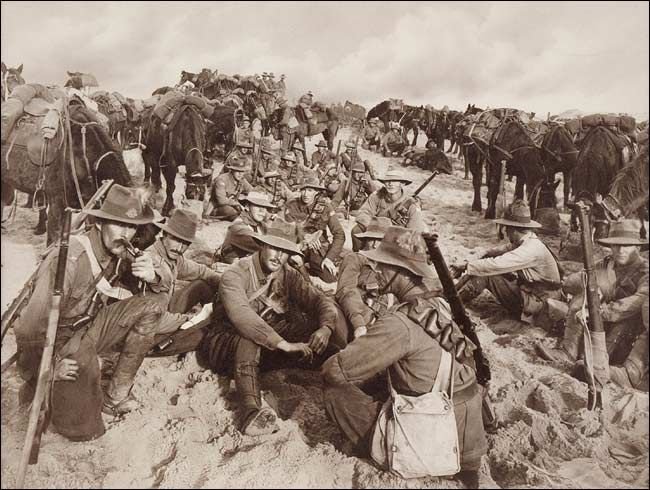
So, reunited with their horses back in Egypt after the Gallipoli debacle (brought about by British foolishness) the Light Horse would distinguish themselves in the Sinai in defence of the Suez Canal. Critically important for transport and shipping movements. They fought on in Palestine, Gaza, Beersheba and a myriad of other places. Fighting was brutal and conditions for man and horse were terrible. Hot, dry and dusty. But these men and horses were tough and each came to rely on the other equally.
One of the most retold and celebrated battles the Light Horse fought was the charge at Beersheba. The objective was 17 wells (water) within Beersheba. It was water the 60,000 men and twice as many horses desperately needed. Not taking Beersheba would mean the end of the Light Horse and would be a significant setback for the war in the desert.
On the 31st of October 1917, at dawn, the battle began.
Some objectives were secured over the day but by late afternoon Beersheba still held out. The horses and men had now been without water for almost 48 hours and were on the edge of collapse. The commander of the 4th Light Horse, Brigadier General Grant, suggested to his commander, General Chauvel that a mounted charge across 3 kilometres of open ground by two regiments would do the job. Madness! But Chauvel agreed.
The enemy in Beersheba? Well, they were entrenched and supported by machine guns and artillery and aircraft. They knew the reputation the Australian's had though so I assume were not all that confident. Still, they had trenches and overwhelming numbers.
A three-line charge-formation was assembled and they advanced at a walk, then a trot and then up to a canter. With about two kilometres to go to the enemy trenches the Light Horseman charged at a gallop. Bayonets were drawn and with them yelling and shouting their battle cries! With artillery lobbing shells, two german planes machine-gunning them and thousands of troops firing rifles and machine guns they thundered towards the enemy trenches.
Casualties were light; The fearsome sight and sound of these crazy "Kings of Feathers" as the Turks called the Australian Light Horse (referring to the plume they wore), unnerved the defenders and soon the Light Horse were leaping over trenches to the objective. The Turks had wired the wells with demolition charges so it was imperative to prevent them being set off. Some wells and buildings were destroyed but in short order the German commander was captured by a bloody Aussie hero Light Horseman and the objective was secured.
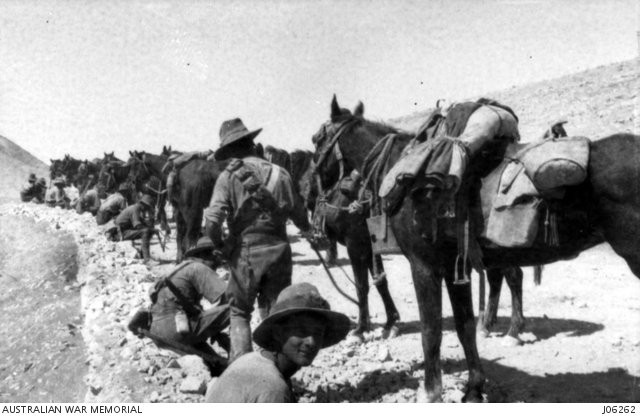
Of the 800 Light Horsemen that charged Beersheba 31 lost their lives. Remarkable considering the odds stacked against them. The horses had acquitted themselves well and had proudly carried their troopers into battle once again. It was one of the most successful cavalry charges in history and the men and their beloved mounts could drink their fill.
As this is such a long post I won't go completely into the full history of the Light Horse but I want to mention one tragic fact.
Of the thousands and thousands of walers that left Australia to go to war...These horses that had so gallantly and bravely carried their troopers into battle, through the desert, bullets, bombs and hardships of war...Well, not a single one ever came home. Not one. Not a single Aussie horse came back to Australia to gallop this brown land beneath blue skies and gum trees.
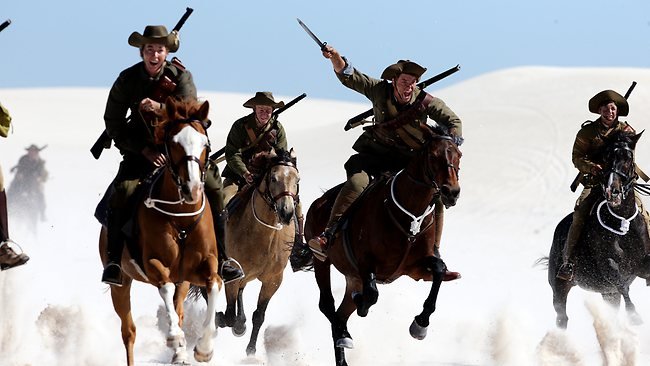
Due to quarantine regulations they had to remain. Tens of thousands of them.
These noble and proud Aussie animals would end up staying in Egypt and pulling a plow or cart; glories of their war long-forgotten or never known in the first place. As one trooper wrote:
Just crawling around old Cairo with a Gypo on his back.
Perhaps some English tourist out in Palestine may find
my broken-hearted waler with a wooden plough behind."
Typo's is what the Aussies called the Egyptians. Makes sense in a way I guess.
An order came down that each horse was to be classified A.B.C or D with all C and D horses to be shot. The process involved removing their shoes, manes and tails because these were saleable items. They were then to be shot and...Skinned for their leather. These brave walers, soldiers of Australia who had so gloriously served.
Thousands and thousands of them were shot. They were taken to olive groves beyond Tripoli, given a nosebag of fodder and were simply shot in the head. Just like that. Bang, you're dead beast! You see, they were not stressed, they didn't know it was coming. They trusted these familiar uniformed-men and the sound of gunfire held no fear for them. They were trusting to their dying breath. There was no honoured grave, no bugle playing the last post to mark their passing.
Some men thought it was less-cruel for his horse to be shot than cruelly treated by a new owner and some even asked to take their friend for a last ride and would come back carrying only a saddle lying that his horse had stepped in a hole and needed to be shot. Can you imagine doing that? Taking your horse, your friend who had carried you into and out of battle out to shoot it? I guess they would rather have done it themselves and save the horse the indignity of being shorn and skinned.
So, there's the story of the Light Horse albeit a very cut down and shortened version.
These men and horses hold a special place in our hearts here in Australia. Every ANZAC day I attend the dawn service at the war memorial and then head down to East Terrace in Adelaide and attend the memorial service to the horses of the light Horse. We take carrots and leave them at the monument. The horses loved carrots of course. At the end of the day piles of carrots and apples get taken away and given to the police mounted division horses. A nice gesture.
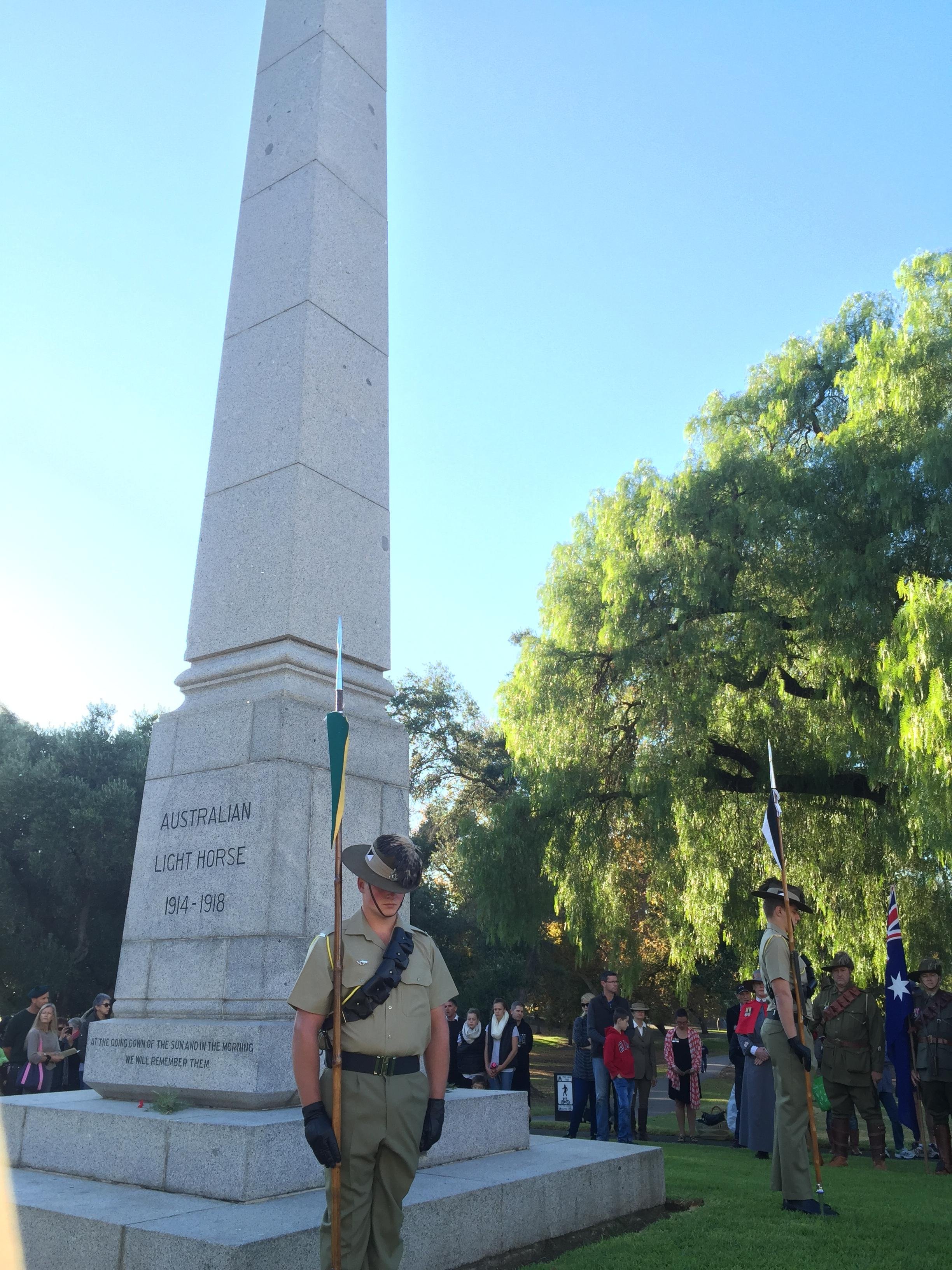
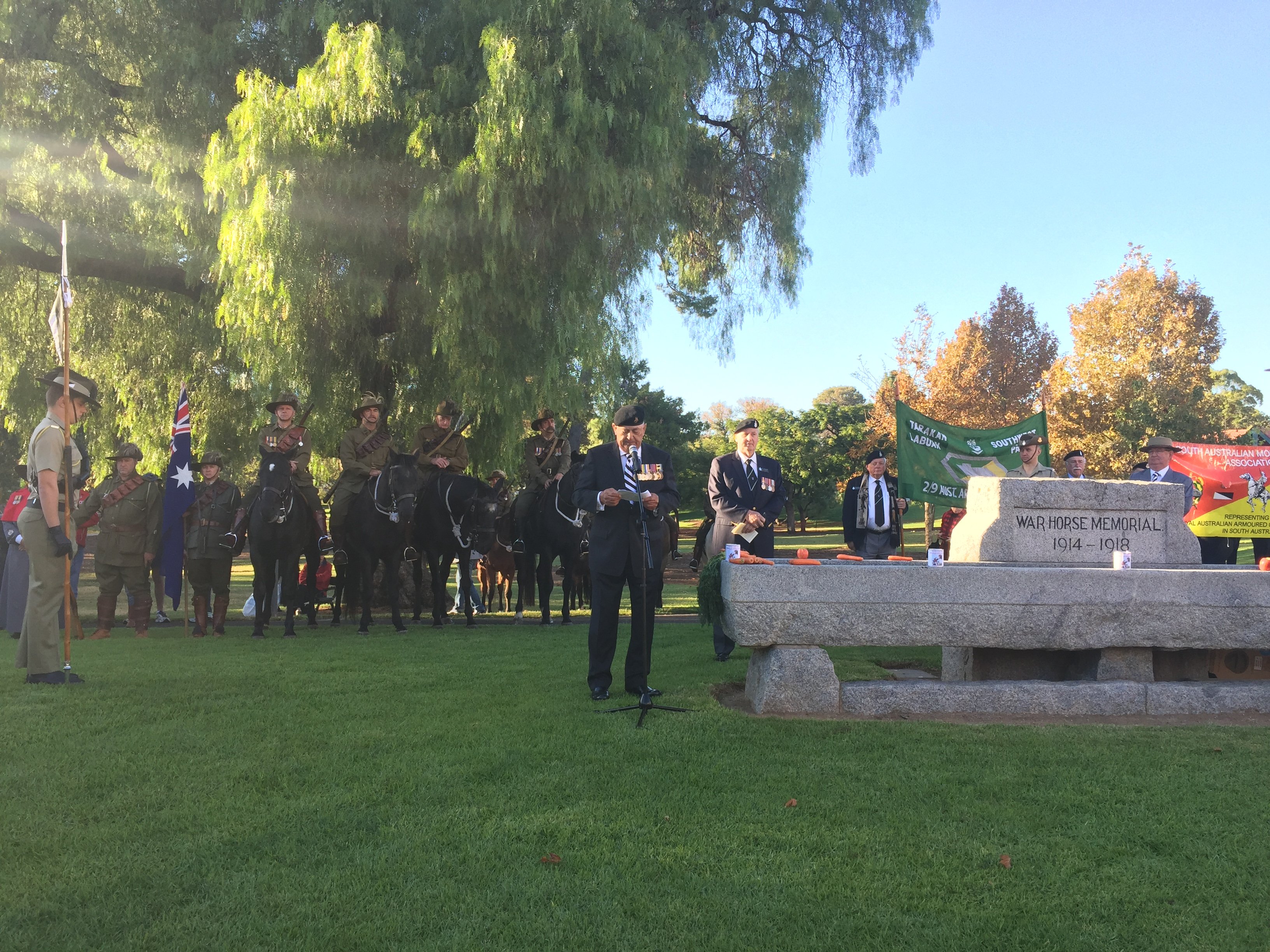
Here's a youtube Trailer of a movie made some time ago about the charge at Beersheba. The movie is called The Lighthorsemen If you take the time to watch the 10 minute trailer you'll get a really great idea of what it was all about to charge into battle on a horse. It's an old movie so the quality is a little sketchy but stick it out please.

War is terrible for everyone. It is tragic, wasteful and quite probably avoidable. I think about these men and women, the ones who go to war and thank them for the sacrifice they make. Who remembers the animals though? The horses in this case, but these days it's working dogs, attack and bomb detection dogs... Well, I remember, as should we all.
Lest we forget
Thanks for reading all the way to the end. I really appreciate it. Thank you.
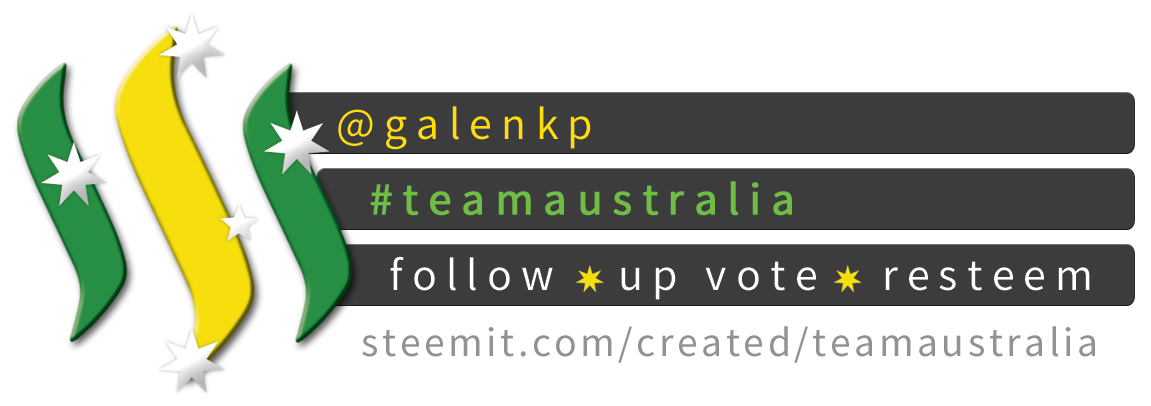
Image sources:
blogs.slq.qld.gov.au/ww1/2015/11/09/sergeant-herrmann-harry-topp-2nd-light-horse-regiment/
longreachplusmore.com.au/wp-content/uploads/2017/01/lighthorse.jpg
resources2.news.com.au/images/2013/12/15/1226783/581878-131216-australian-lighthorsemen.jpg
blogs.slq.qld.gov.au/ww1/2015/09/27/digitisedslq-trooper-walter-malcolm-campbell-journal/
tophdimgs.com/333906-anzac-day.html
i.pinimg.com/736x/8c/12/da/8c12da487449189af54b38ec900e8cf3--ww-photos-war-horses.jpg
